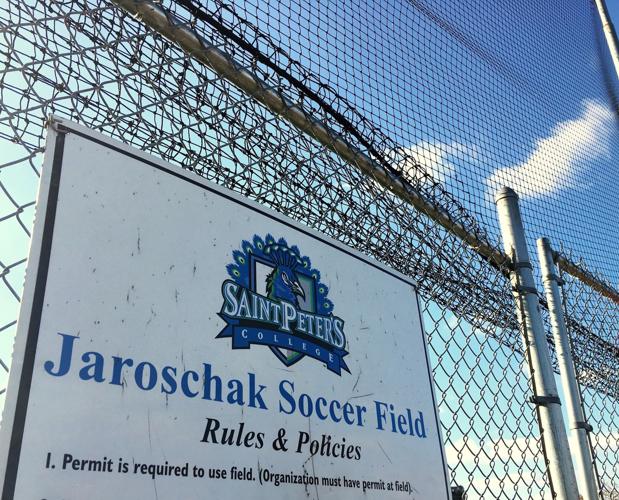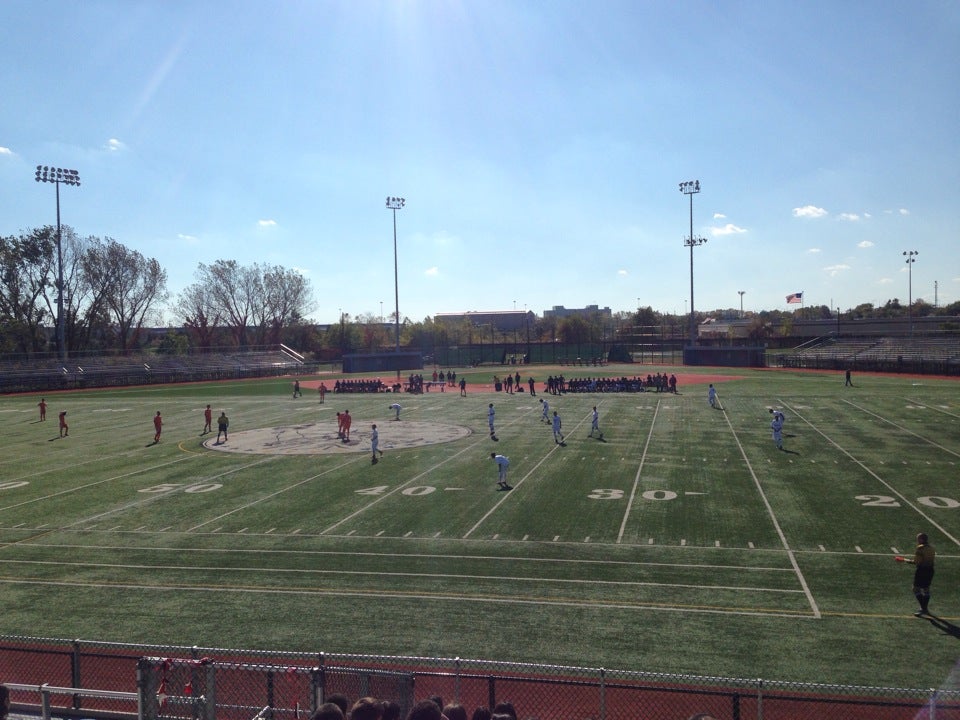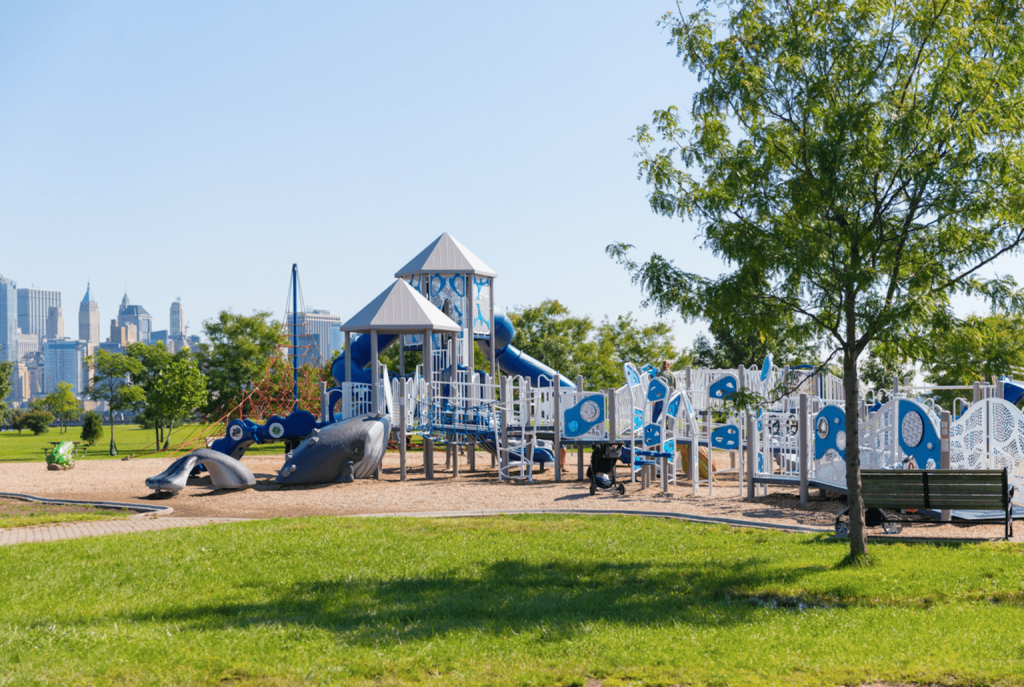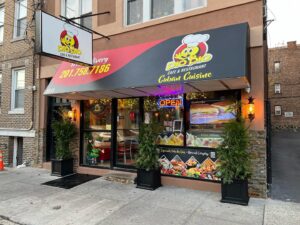Photo courtesy of NJ MOM.
This story was updated to include the DEP’s plan for 60 acres of free active recreation facilities and Sam Pesin of FOLSP’s support of that.
The Liberty State Park that Jersey City residents and New Jersey natives have known for the last 47 years is soon to change. And what that looks like is up to the state and its appointed project leaders, but most importantly: you.
On Saturday, March 2 at 12:30 p.m., the New Jersey Department of Environmental Protection is hosting another open public comment opportunity to discuss the future of Liberty State Park, which is currently in its Phase 1A of the restoration project. While the project is already underway with a $50 million budget, many people on opposing sides have been chiming in on what the new park should look like and offer.
The Different Takes
The People’s Park Foundation (PPF), which is funded and backed by the Paul and Phyllis Fireman Charitable Foundation, was founded with a mission of creating Liberty State Park into an “inclusive” place where all in Jersey City can have opportunities for active and passive recreation as well as arts and cultural spaces, according to their website.
Heading the non-profit organization is Bob Hurley, a four-time national and 26-state champion with the now-closed St. Anthony High School and former worker for the Jersey City Department of Recreation. Now, years after retirement, Hurley, a Naismith Basketball Hall of Famer, serves as president and CEO of PPF. He told Slice of Culture that Liberty State Park could reunite the local youths from different areas, which is something that has been lost over time.
“[Jersey City] has lost the potential to have parks in most places of the city right now and this can be for us–a way of making sure that this next generation of kids will have adequate parks and have places where they can get together and meet,” the lifelong Jersey City resident said.
“The Jersey City Boys & Girls Club used to be a great place for kids from all different neighborhoods and [Liberty State Park] can be an outdoor version of that… And you realize you’re not that different from somebody from the Heights when you’re from Greenville or The Junction [or] Downtown. We’re all kind of citydwellers, but we’ve lost some of our socialization, certainly because of the pandemic and maybe our facilities are not quite where they need to be.”
“It’s an absolute must that we get this done for now and for the future.”
Liberty State Park, which is over 1,200 acres, stretches roughly across Audrey Zapp Drive to Bayview Avenue and Morris Pesin Drive. It has 600 acres of land and 600 acres of water. 240 acres of that land, however, has been closed off for decades due to old industrial pollution. Now, there’s plans to clean it up and reintroduce “native tidal and non-tidal wetlands, meadows and urban forest,” which would be in the north side of the park, closest to the Hudson-Bergen Light Rail station.

Of that 240, PPF is proposing to the state DEP that there should be 85 acres–while the DEP approved 60 acres–of active and passive recreational spaces, which they say would be most accessible to the community:
- 250,000 square foot state-of-the-art Community and Recreation Center
- Multi-purpose turf fields
- 5,000-seat football stadium
- 7,000-seat waterfront amphitheater
- Multi-functional cultural center at the historic railroad
- Community gardens
See the full list here. Source for number of seats here.
However, standing on the opposing side of PPF’s proposal is Sam Pesin, the son of Morris Pesin who spearheaded the establishment of LSP in 1976 and is the president of Friends of Liberty State Park. Pesin has been publicly critical of PPF’s suggested vision.
“People want a park like Central Park and not these large commercial venues. People want open space for unstructured active recreation and passive recreation surrounded by nature and, secondarily, sensibly placed active structured recreation,” Pesin told Slice of Culture.
“The sports-and-entertainment complex would be exclusionary [with] admission fees and it would be causing unpreventable traffic jams that would keep regular people from using Liberty State Park. No matter how many shuttle buses they’d have… it’d be impossible if there’s a sports event or concert event.”
Hurley noted that there’s been numerous occasions where he was asked if there were any shuttle buses to get around the state-governed park and when he would say no, people realized they had much to walk.
In terms of the “sports-and-entertainment complex,” this sparked some locals’ concerns of privatizing the park; it’s been written in editorials and etched into the crevices of Jersey City Reddit. When asked about concerns of privatization–the transfer of a public ownership to a private ownership–Hurley said that LSP is already there; there’s two restaurants, one which is marked as fine dining and the other a wedding & event venue, the Liberty Landing Marina, a parking lot for those who take the ferry and picnic areas that come with a fee.
“If putting food trucks is privatization and someone managing the entire scheduling of fields is privatization, it’s going to have to be a partnership between public and private…,” Hurley added.
“We’ve talked about why don’t we have a [conservancy] just like Central Park where a group of people are responsible for running it and it can be from the government [or] DEP so it can be managed properly.”

For The Youth
Originally, the DEP’s plan for LSP’s revitalization–which has taken a long time to get off the ground–focused primarily on the contamination cleanup and reintroducing natural habitats. But the DEP later redesigned its vision, which is in its current form and now includes “plenty” of ballfields, swimming pool and possibly an aquatics center, but not the amphitheater–or concert venue–nor the stadium. PPF still declared it a victory and a step in the right direction.
On Feb. 20, PPF held a meeting at 902 Brewing Co. in the Bergen-Lafayette area of Jersey City. The small, but vocal group consisted of concerned parents; high school students and athletes; and other locals. The message there was the same: recreation and inclusive activities for everyone.
Jersey City is home to roughly nine high schools which offer sports programs: Lincoln, Snyder, Ferris, Dickinson, Hudson Catholic, McNair Academic, University Academy Charter, Saint Peter’s Prep and Saint Dominic’s Academy—the latter five being private or charter schools. The 286,000-populated town also has St. Peter’s University, a Division I institute, and New Jersey City University, a Division III college.
Hurley along with Ferris High School head baseball coach Josh Beteta, NAACP Jersey City Branch president Charles Mainor and former Jersey City Public Schools Superintendent Franklin Walker echoed the same concern to Slice of Culture: there’s not enough adequate recreation spaces and parks in Jersey City.
While there are a number of parks spread throughout the city, the two with the most space that provides athletic fields and recreational activities are Lincoln Park in the West Side area and Pershing Field in the Heights. Additionally, not all local schools are equipped with fields for their football, baseball, softball and soccer athletes, which Beteta said causes difficulties in dividing what team gets which field and when. Sometimes, it also forces athletes and their parents to travel someplace further.

“Unfortunately our fields are unmanageable at this point. They’re dirt fields, so what affects grass and dirt fields is weather,” Beteta added. “So what we need is to catch up with the times–turf fields are the way to go. [It’s] cheaper, less maintenance and everyone gets to use it for multiple purposes.”
In 2018, the Saint Peter’s Tribune reported the “need to renovate Jaroschak,” which is located in Lincoln Park and is home field to SPU’s soccer, softball and baseball. A former soccer player called it one of the “worst” Division I fields because it’s “bumpy” and some areas are “soft” and “hard.” It’s unclear if the field has been improved since then.
As for football, the PPF’s proposal of a 5,000-seat stadium stems from the old Roosevelt Stadium. Situated at the southwest section of Greenville, it held 24,500 seats and hosted games for Dickinson, Ferris, Lincoln and Snyder as well as the MLB’s Brooklyn Dodgers, including the debut of trailblazer Jackie Robinson. But the popularity eventually began to dwindle and now Society Hill stands in its place.
“[In recreation, there’s] the discipline, the comradery, the sportsmanship… and there’s something that we don’t have a lot of in Jersey City,” Mainor said.
“[And] the No. 1 football team is in Snyder High School, but they’re walking the halls because there’s nothing for them to do.”
Walker, who also spent time as a high school coach, agreed with the benefits of recreation. He added that:
“We talk about not just facilities, but we’re talking about equipment and supplies that support the best so that when students have the opportunity to go places they don’t feel they’re inferior… reinforcing this ‘state-of-the-art’ set up makes our children state-of-the-art.”
Hurley, Mainor, Walker and Pesin are on the design task force.
But aside from recreation, Beteta told Slice of Culture that the community just wants an outlet.
The five-year head baseball coach grew up in the Bergen-Lafayette area. When speaking to parents, students or residents walking the streets in the south part of Jersey City, he said they want to be able to go somewhere different.
“They want a place to go to that’s different from where they’re at. They realize and understand that the situation in the southside is a little more dire than everywhere else. You can’t just hang out in the streets. There’s particularly more violence in that area,” he added.
“Every parent wants to see their kid succeed, this park gives them that outlet. This could be their oasis.”
Pesin, however, argued that it is not Liberty State Park’s responsibility to solve these problems. Instead, it should be the city of Jersey City.
“The primary responsibility for renovating and creating sports facilities for Jersey City youth is Jersey City… [Paul Fireman who funds PPF] should pressure Jersey City to fix the Caven Point Cochrane stadium and fix the Pershing Field ice rink….” Pesin said.
“Just pressure and encourage Jersey City, which really should’ve gotten grants [or] private money to prevent the deterioration [of facilities].”

Hurley explained that if PPF can accomplish something in their LSP proposal, then PPF has “done their job.”
“I think the city and board of education are responsible for a lot of other things going on in Jersey City. I think this is a huge task for us to take on,” Hurley explained.
“When we’re able to have success in this, perhaps we can then venture out, but the group of people who are aligned here [with PPF], we’re focusing all of our attention on [LSP]… because if we don’t take care of this one area… we would have to find something on the western part of Jersey City to try to be the only place where we potentially could do something and right now, [LSP] is staring us right in the face.”
Hurley also noted that with PPF’s proposal, there’s opportunities for employment for young kids in the summer and chances for local businesses to expand their services in food trucks.
Nature Preservation
The revitalization program consists of three phases. Phase 1A, which is its current state for the Interior Area and titled “Cleanup, Restoration & Resilience”; Phase 1B for the Northern Area called “Immediate Active Recreation, Arts & Culture”; and Phase 2 for the Southern area and Long-Term Plan “Holistic Long-Term Master Plan.”
Liberty State Park is home to tidal wetlands, non-tidal wetlands, grasslands and forests.
In Phase 1A, the DEP is conducting an ecological “restoration and construction of nature-based solutions” that could build resiliency against flooding and climate change. To build the resiliency, Pesin said that a channel of the river from the north cove of the park would be brought under Freedom Way and into the interior, which would be the saltwater wetlands going in and out with the tides.
“The DEP has done the professional thing of hiring professional park planning consultants to look at the idea and come up with proposals for the public…,” Pesin said.
“The DEP has put together nature and science-based resiliency plans for flooding and climate change. [It also] provides habitats and open space and trails.”

PPF said that they do not benefit in any way and they’re not the “professionals.” However, they want the recreational spaces in accessible space, which is the northside of the park. They also proposed to build up because wetlands are created by digging down and it can “never be changed.”
Walker further stated that leaders need to be able to see into the future and we can’t “operate the past.”
“We know Liberty State Park is historic and [the task force’s] position is to protect the history of LSP, but we can’t protect it at the sacrifice of giving our children the chance to move into the future,” he said.
While Pesin says there’s no way of meeting in the middle, he and the Friends of Liberty State Park is fully supporting the state DEP’s plan of 60 acres for free active recreation facilities in the park; they do not support a “5,000-seat football stadium” and “7,000-seat commercial concert venue.”
Both sides agreed that the more public input, the better.
The next Design Task Force meeting takes place on Saturday starting at 10 a.m. with the task force meeting. At 12:30 p.m. there will be open public comment in-person at 1 Audrey Zapp Drive and online via Zoom, register for the virtual meeting here.













One Response
Are you going to interview Sam Pesin to get his input on this subject? Also – a glaring question is – if Paul Fireman can spend $1m a year (as reported on the public record “Form 990” tax filing for People’s Park Foundation (PPF), why can’t he pay for the Caven Point athletic field and/or other sports facilities in Jersey City to be fixed and maintained? The PPF paid $400k to a law firm and $200k to a PR firm in 2022 – and $200k to Bob Hurley. Nothing – NOTHING! – paid towards anything that actually improves any community parks or amenities in Jersey City.